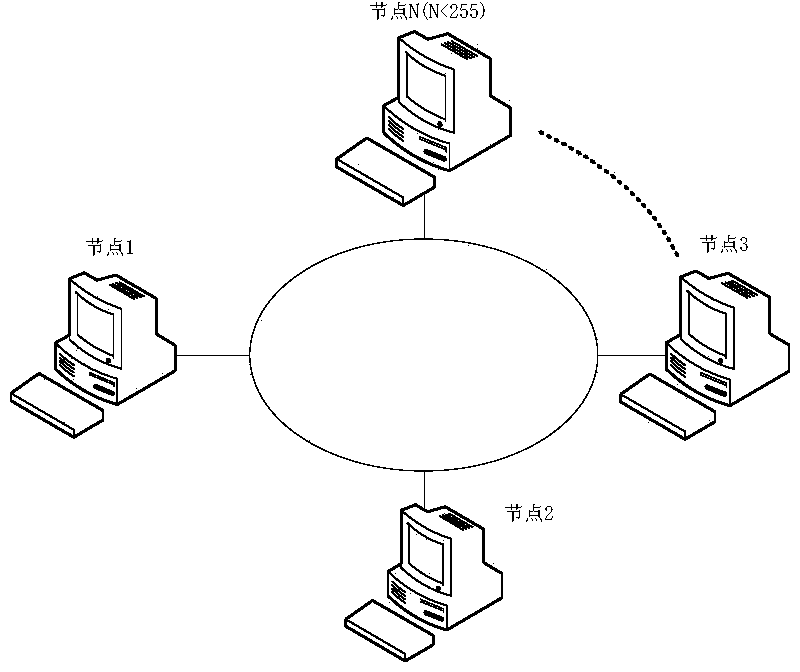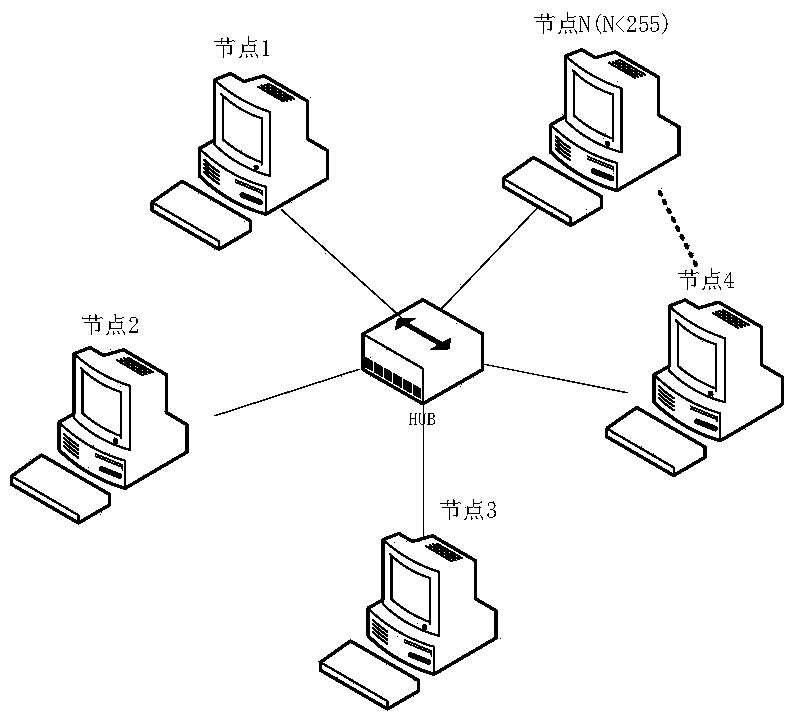Multi-node automatic memory allocation method based on reflective memory network
A reflective memory network and automatic allocation technology, applied in resource allocation, multi-programming devices, electrical components, etc., can solve the problems of rigid memory allocation, poor networking flexibility, and large workload, and achieve the effect of easy management and query
- Summary
- Abstract
- Description
- Claims
- Application Information
AI Technical Summary
Problems solved by technology
Method used
Image
Examples
Embodiment
[0038] Select three reflective memory node cards and load them into the computer, and use optical fibers to form a reflective memory network as shown in Figure 1; the node numbers of the three node cards are set to 0x01, 0x02 and 0x03 through jumpers respectively. The reflective memory node card selected here is VMIPCI-5565 produced by GE, and its main features are as follows:
[0039] The longest connection distance of multi-mode fiber is 300m, and the longest connection distance of single-mode fiber is 10km
[0040] ●Data packet size can be dynamically adjusted between 4-64 bytes
[0041] ●Transfer rate from 47.1MB / s (4-byte packet length) to 174MB / s (64-byte packet length)
[0042] ●128M reflective memory
[0043] ●Two independent DMA channels
[0044] ●Any node can send interrupt information to the specified node or all nodes
[0045] ●With error detection function
[0046] After the reflective memory network is formed, the node card startup process is carried out: fi...
PUM
 Login to View More
Login to View More Abstract
Description
Claims
Application Information
 Login to View More
Login to View More - R&D
- Intellectual Property
- Life Sciences
- Materials
- Tech Scout
- Unparalleled Data Quality
- Higher Quality Content
- 60% Fewer Hallucinations
Browse by: Latest US Patents, China's latest patents, Technical Efficacy Thesaurus, Application Domain, Technology Topic, Popular Technical Reports.
© 2025 PatSnap. All rights reserved.Legal|Privacy policy|Modern Slavery Act Transparency Statement|Sitemap|About US| Contact US: help@patsnap.com



